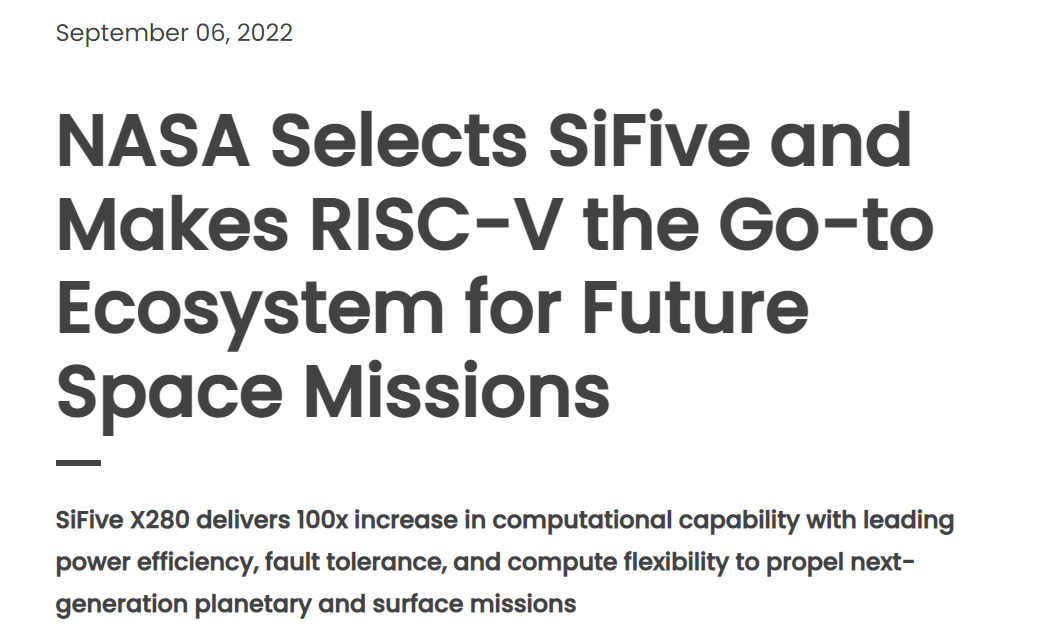Skip to content
From WeChat Official Account: OSC Open Source Community
Link: https://www.oschina.net/news/209595/nasa-sifive-risc-v-ecosystem
SiFive has announced that it has been selected by NASA to provide the core CPU for NASA’s next-generation High-Performance Space Computing (HPSC) processor. Founded in 2015, SiFive is a chip designer based on the RISC-V architecture, dedicated to bringing open-source standards to semiconductor design, making it cheaper and easier for customers to use.
According to the introduction, this processor will be jointly developed and designed by SiFive and Microchip; the HPSC is expected to be used in almost all future space missions, from planetary exploration to lunar and Mars surface missions. The HPSC will leverage an 8-core SiFive Intelligence X280 RISC-V vector core along with four additional SiFive RISC-V cores, providing 100 times the computing power of today’s space computers. “The significant increase in computing performance will help bring new possibilities to various mission elements, such as autonomous rovers, visual processing, space flight, guidance systems, communications, and other applications.”
SiFive X280 is a multi-core RISC-V processor that supports vector extensions and SiFive intelligent extensions, optimized for edge AI/ML computing. The X280 is well-suited for applications that require high throughput and single-thread performance while being severely power-constrained.
Compared to today’s space computers, the X280’s computing power is increased by 100 times. In scientific and space workloads, the X280 offers several orders of magnitude improvements compared to competing CPU solutions. SiFive claims that these vector extensions allow chip designers to achieve six times the performance of standard RISC-V vector instructions while maintaining low power consumption of the platform. In addition to sheer performance, chips for outer space must also cope with harsh working conditions, and the new fault-tolerant processor is one of the hallmarks of the X280.
The new HPSC processor is designed to replace the aging PowerPC-based BAE RAD750; the latter was launched over 20 years ago and has been used in countless spacecraft, including the Curiosity and Perseverance rovers as well as the James Webb Space Telescope.
Jack Kang, Senior Vice President of Business Development at SiFive, stated that NASA’s previous chip was used for decades, so this new RISC-V chip will also be used for decades to come. He expressed that the RISC-V architecture is one of the architectures most likely to have a large developer base in 10, 15, or even 20 years, so choosing RISC-V will be a safe bet for NASA.
The announcement pointed out that the future HPSC processor and X280 computing subsystem are expected to be useful in various applications, including industrial automation, edge computing, approved intelligence, and aerospace applications for other government agencies.
Related links: https://www.sifive.com/press/nasa-selects-sifive-and-makes-risc-v-the-go-to-ecosystem

